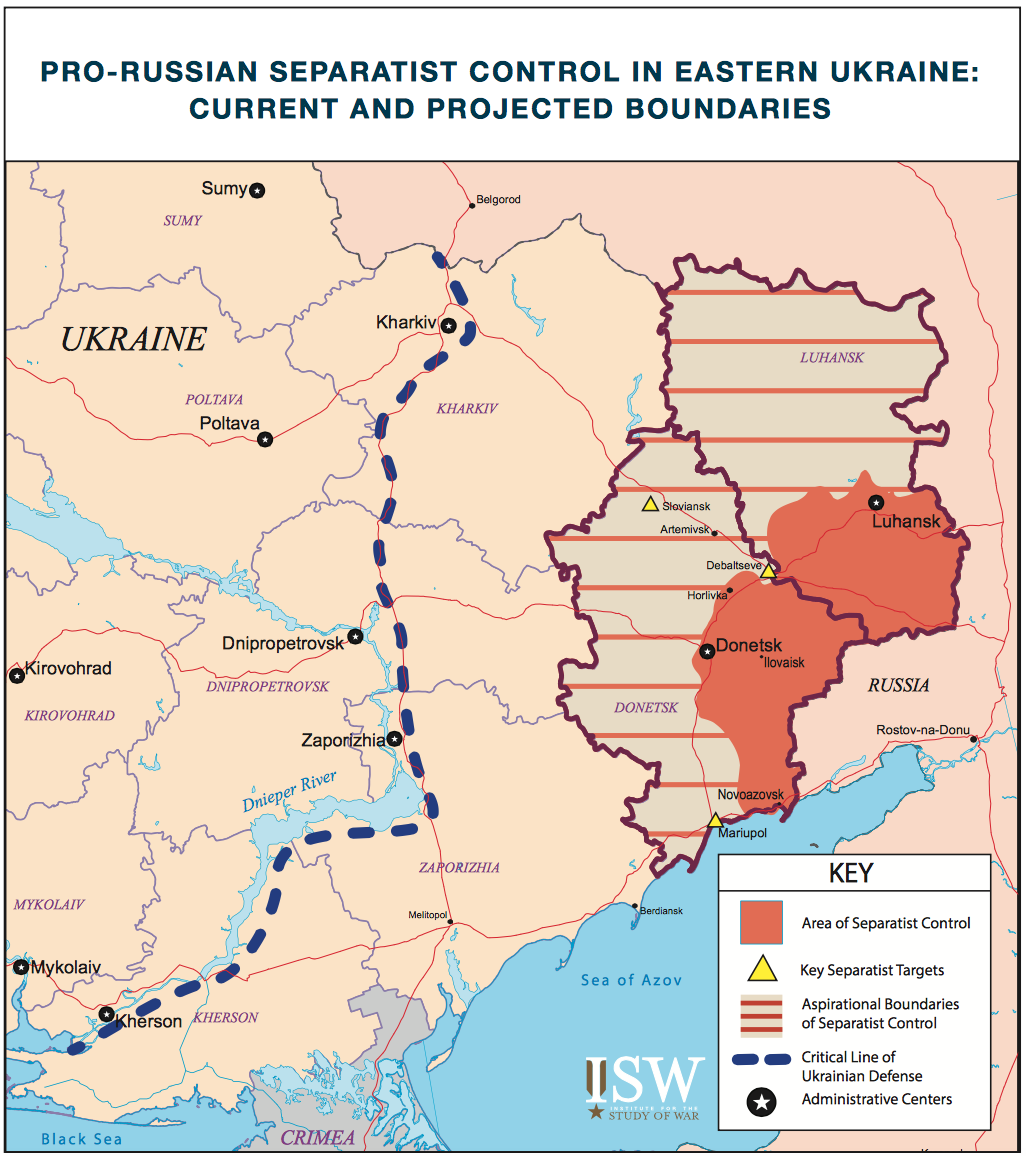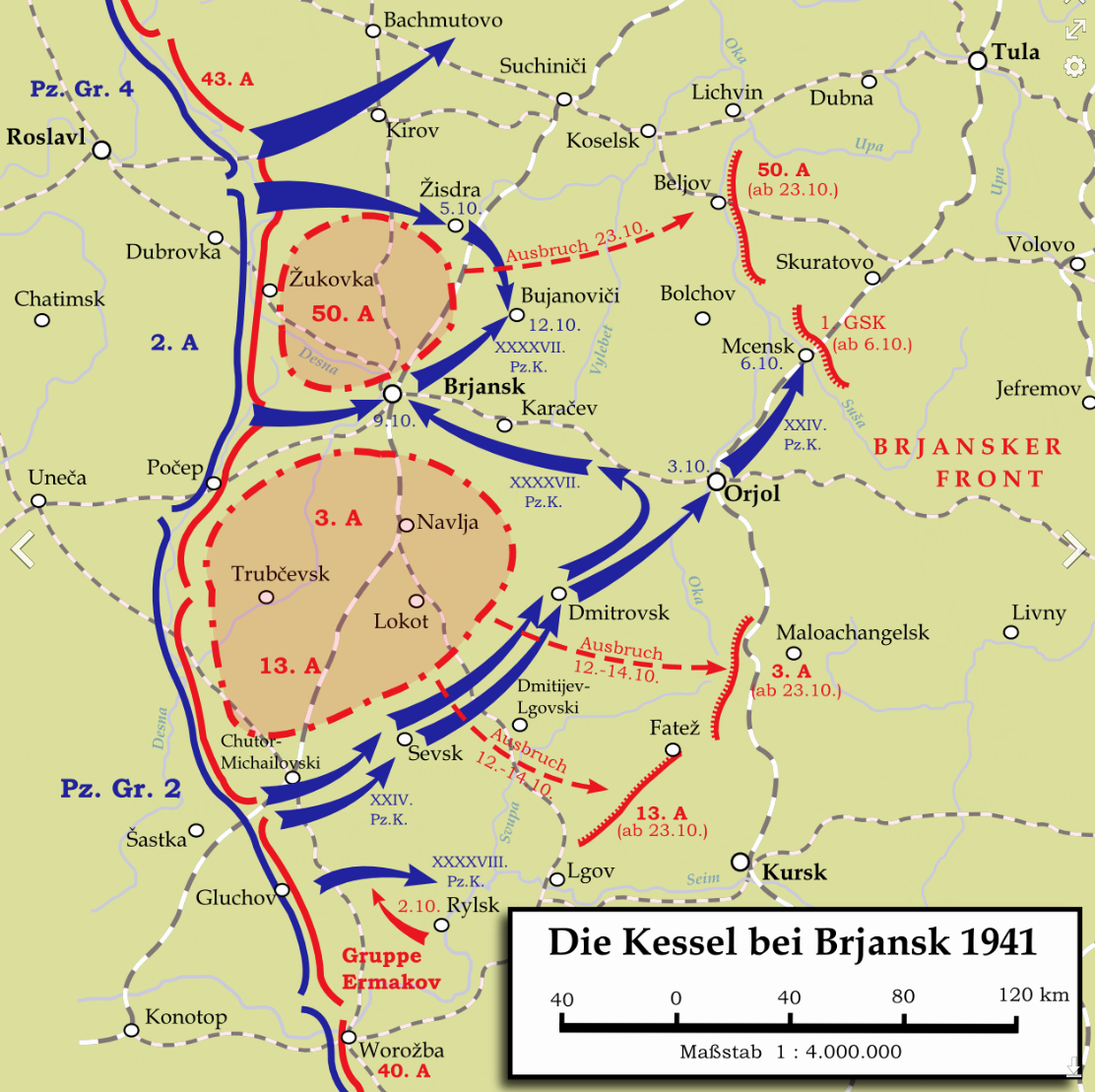This article was last updated on April 16, 2022
Canada: ![]() Oye! Times readers Get FREE $30 to spend on Amazon, Walmart…
Oye! Times readers Get FREE $30 to spend on Amazon, Walmart…
USA: ![]() Oye! Times readers Get FREE $30 to spend on Amazon, Walmart…A backgrounder by Hugo Spalding at the Institute for the Study of War provides us with an interesting analysis of the conflict in Ukraine to this point in time and provides us with information on Vladimir Putin's likely future objectives in the ongoing crisis in Ukraine.
Oye! Times readers Get FREE $30 to spend on Amazon, Walmart…A backgrounder by Hugo Spalding at the Institute for the Study of War provides us with an interesting analysis of the conflict in Ukraine to this point in time and provides us with information on Vladimir Putin's likely future objectives in the ongoing crisis in Ukraine.
Here is a map from the backgrounder showing the areas of eastern Ukraine that the separatists control, the key targets and the areas that the separatists aspire to control:
It is important to note that the key city of Debaltseve fell to the separatists when Ukrainian forces retreated from the city on February 18, 2015.
As you may recall, Putin's first move in the conflict was to seize the Crimean Peninsula, a seizure that was not met with any resistance by Kyiv. This move allowed Russia to secure permanent retention of its home port for its Russian Black Sea fleet.
Putin's next move was to build military power in eastern Ukraine in the Donetsk and Luhansk Oblasts to promote the political legitimacy of the region's separatist elements. By supporting separatist elections in these areas, the self-proclaimed Donetsk and Luhansk People's Republics (DNR and LNR) were created. Russia has also provided humanitarian and further military aid to the region, a move that proved to be crucial to the separatist-held regions when Kyiv decided to cut off government services to the region in November 2014. While Putin has deployed Russian military forces to support the separatists, even more critical has been the provision of operational-level campaign planning which has resulted in the military campaigns taking on a distinctive Russian and/or Soviet operational appearance. These operations consist of several phases as follows:
1.) Preparatory phase intended to soften Ukrainian defences using artillery, special ops and terrorism.
2.) Penetration battle intended to force the Ukrainian defences into a "cauldron battle" (Kesselschlacht) where enemy forces are encircled or enveloped, a tactic that was used on the Eastern Front in World War II as shown on this map which shows the German Panzer groups encircling Russian targets along the Bryansk Front in 1941:
In this tactic, forces that are not used to encircle opposing forces continue their advance unopposed with the goal of seizing important objectives.
3.) Maneuvering by armoured columns along multiple axes to the next set of military objectives.
4.) Consolidation by taking sufficient terrain to allow the setup for another offensive.
It appears that the preparation and maneuvering phases are designed to be of short duration, ending before Kyiv, NATO or the United States can move to assist Ukraine's forces. Russia's capacity to escalate fighting at very short notice gives it a distinct advantage over the Ukrainian military.
Now, let's look at what happened in the early phases of this conflict. The preparation phase took place between September 5, 2014 and January 14, 2015, after Kyiv signed a ceasefire agreement, the Minsk Protocol, with pro-Russian separatists in September 2014. This led to a line of demarkation between Ukraine and separatist controlled portions of Donestk and Luhansk and required both Ukraine and Russian forces to withdraw heavy weaponry 15 kilometres from the demarkation line, creating a demilitarized buffer zone.
The maneuvering phase started on January 15, 2015 and is still continuing. This phase began when Russian-backed separatists stormed the new terminal of the Donetsk airport on January 15, defeating the mixture of Ukrainian paratroopers and other volunteers who had been guarding the airport since May 2014. The Ukrainian government deployed tanks to evacuate its wounded soldiers that had been trapped by the hostilities and on January 19, 2015, one of the floors in the new terminal collapsed after pro-Russian militants used thermite grenades to kill and wound as many as 50 Ukrainian paratroopers. All of the remaining Ukrainian troops were captured or withdrew on January 21, 2015. This move by the separatists resulted in Kyiv pursuing another ceasefire.
Next on the separatists' hit list was Debaltseve, a key rail and road hub between the separatist-held cities of Luhansk and Donetsk. As many as 8000 Ukrainian soldiers and volunteers were defending Debaltseve which was surrounded on all three sides by separatist forces (i.e. a nearly "closed cauldron") before it fell on February 18, 2015. Ukraine's loss in Debaltseve has resulted in the removal of one of the last hurdles that stood in the way of the creation of a united "Novorossiya" territory which includes both Donetsk and Luhansk (i.e. a "New Russia" which refers to a historical region of the Russian empire in modern-day southern Ukraine). The collapse of the Ukrainian defense at Debaltseve leaves Russia in a much stronger position to co-ordinate future offensives since there is now a direct rail and highway connection between Russia and the front lines in Donestk which will allow for the launching of much quicker offensive moves.
Now, let's look at what lies ahead. Russia has already made it quite clear that it has abandoned the September 2014 ceasefire agreement by supporting maneuvers in Donetsk and Debaltseve. From here, it is likely that separatist forces will continue to attack Ukraine-controlled territory until they reach the western border of Donetsk and the northern border of Luhansk (the area crosshatched in the map above). Logistically, the city of Mariupol located on the shores of the Azov Sea is the next target for the separatists. Attacks in January 2015 suggest that the city is vulnerable to a "cauldron" offensive, similar to what was seen in Debaltseve. This will put Russia in an ideal position to establish a land bridge to the Crimean Peninsula. The early February 2015 announcement that 100,000 men will be mobilized under a joint DNR/LNR army suggests that the battle for territory in eastern Ukraine is likely to continue.
Once the entirety of territory in both Donetsk and Luhansk are captured, Russia has some decisions to make as follows:
1.) If Russia favours an extended military campaign, it may advance along the Azov Sea coastline toward Crimea through Zaporizhia Oblast. The establishment of a land corridor along the Azov Sea would allow Russia to bring Crimea into its economic and security framework established in Donetsk and Luhansk. Once that is established, separatist forces could move northwest toward the key city of Dnipropetrovsk.
2.) Once the northern part of Luhansk is captured, Russia may decide to extend the separatist incursion westward into the Kharkiv Oblast, capturing the city of Kharkiv, the second-largest city in Ukraine.
At this point, Russia is most likely to facilitate a separatist offensive until all of the Donetsk and Luhansk Oblasts are in separatist hands. Once that is complete, Russia will likely pause to consolidate its hold on the territory by resupplying and reconstructing its territories. Rather than annexing the two oblasts as it did in the case of Crimea, Russia will likely pursue a settlement where Kyiv recognizes the new border for the purpose of both internal security and political administration. Russia will likely continue to support separatist offensives until key urban infrastructure points are under their control since this infrastructure is necessary to govern a population.
To close this posting and, in the interest of balance, here is a video from RT back in December 2013 showing how the United States was involved in the Maidan protests as the U.S. was putting pressure on Kyiv to sign a trade agreement with the EU rather than with Russia:
It is quite obvious that both the Americans and the Russians have intervened in Ukraine and that the biggest losers will be Ukraine’s civilian population and that both superpowers are well versed in playing the blame game.
As an aside, if you want an interesting "inside view" (literally) of what is going on in Ukraine, I recommend The Blog Fodder which you can find here.
Click HERE to read more of Glen Asher's columns
You can publish this article on your website as long as you provide a link back to this page.



Be the first to comment